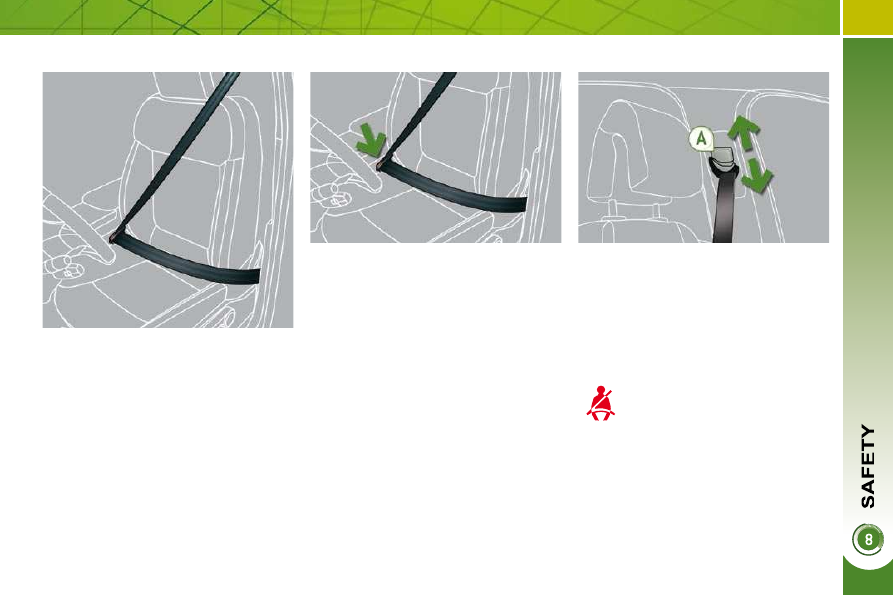Peugeot 3008 Dag (2010.5). Instruction - part 10

125
Height adjustment
Front seat belt not fastened/
unfastened warning lamp
Fastening
Pull the strap, then insert the tongue
in the buckle.
Check that the seat belt is fastened
correctly by pulling the strap.
To adjust the anchorage point,
squeeze the control A and slide it
until you fi nd a notch.
When the ignition is switched
on, this warning lamp comes
on on the seat belt and pas-
senger's front airbag warning
lamps display, if the driver and/or the
front passenger has not fastened their
seat belt.
From approximately 12 mph (20 km/h)
this warning lamp fl ashes for two minutes
accompanied by an audible signal. Once
these two minutes have elapsed, this
warning lamp remains on until the driver
and/or the front passenger fastens their
seat belt.
Unfastening
Press the red button on the buckle.
Guide the seat belt as it reels in.
SEAT BELTS
Front seat belts
The front seat belts are fi tted with a pre-
tensioning and force limiting system.
This system improves safety in the front
seats in the event of a front or side im-
pact. Depending on the severity of the
impact, the pretensioning system in-
stantly tightens the seat belts against
the body of the occupants.
The pretensioning seat belts are active
when the ignition is on.
The force limiter reduces the pressure
of the seat belt on the chest of the occu-
pant, so improving their protection.